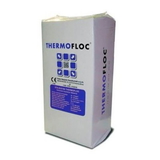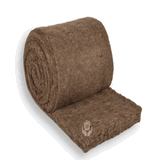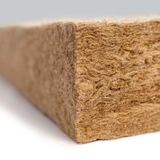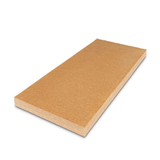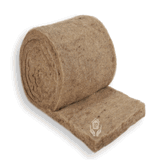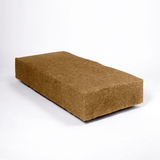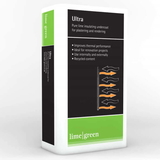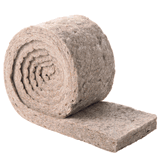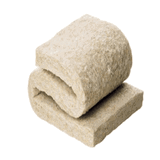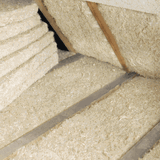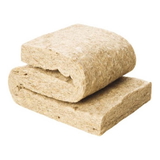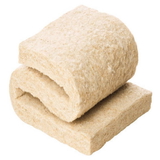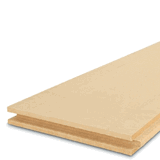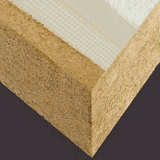- Blogs
- What Are the Advantages of Natural Insulation?
What Are the Advantages of Natural Insulation?
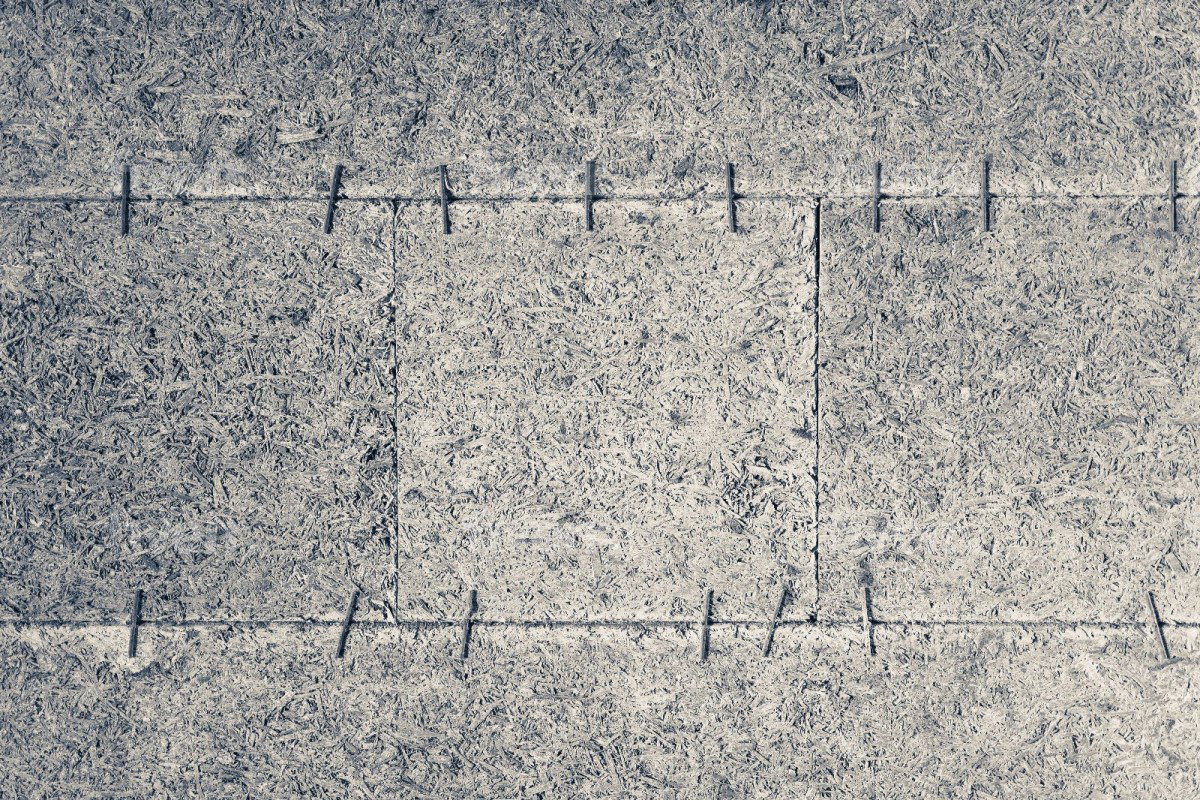
Natural insulation has become increasingly popular among homeowners seeking eco-friendly and sustainable ways to improve their living spaces. These eco insulating products are made from renewable resources including natural fibre insulation like wood fibre, hemp wool, sheep's wool, cellulose, cork etc.
Natural insulation offers benefits ranging from personal well-being to overall environmental welfare. When sustainable materials are used to create a more comfortable indoor environment, improve thermal and acoustic insulation, reduce one’s overall footprint, and save money, they allow for a responsible approach to building and refurbishments.
If you’re considering using sustainable insulation for your property, it helps to examine all its advantages across a wide range of natural insulation products
What Are the Benefits of Natural Insulation?
Natural insulation materials offer several potential benefits over their synthetic counterparts. Here is an overview of why it makes sense to insulate your home or property using these eco-friendly options.
1. Eco-Friendly Solution
Eco insulation is made from renewable materials grown and harvested sustainably, making it a more environmentally friendly choice. These products are created without depleting resources. 
Sheepwool insulation often comes from an annual shearing. Hemp can grow up to four inches per day during its peak season in the summer months, ensuring there are enough supplies to create effective and affordable products for homes, commercial buildings, and other structures.
Most of these eco friendly products do not contain formaldehyde or any synthetic agents that cause harm to the environment. This is even manufactured releasing little to no CFCs or HCFCs
Natural insulation is also biodegradable, so it breaks down as time passes. That means its disposal has less of an environmental impact when compared to products like fibreglass or foam. Some eco-insulation products like Sheep's wool can further be recycled end of their life.
2. Improved Indoor Air Quality
Most products in this category are free of additives, chemicals, or synthetic agents that contribute to potential health problems. Insulation made from sustainable materials actively participates in improving air quality by absorbing or trapping the synthetic additives and chemicals present in the air, in its fabric.
If VOCs stay in the environment, people often experience headaches, dizziness, nausea, eye irritation, and skin irritation. Prolonged exposure can damage organs, cause respiratory problems, or even be responsible for some types of cancer.
Furthermore, natural insulation materials do not need chemical treatments, such as fungicides, to be effective, so additional VOCs aren’t added to the home or business.
Some natural insulations, like cellulose or recycled paper insulation, sheep wool insulation etc can help reduce airborne particles and allergens, as their dense structure effectively filters out dust, pollen, and other irritants. This can be particularly beneficial for those with allergies or respiratory issues.
Insulation made from traditional materials often releases harmful fibres during installation, while sustainable insulation does not, which relates to fewer health issues during installation. In fact, most eco insulation can be installed and used as wall and loft insulation without using protective gear or gloves.
3. Energy Efficiency Improvements
With natural fibre insulation materials, you receive a high thermal resistance, helping to keep homes warmer in the winter and cooler in the summer, creating lower energy consumption and utility costs.
Cellulose insulation, made from recycled newspapers, has a thermal value rating comparable to some most common synthetic insulation materials. Sheepwool has an even higher rating.
In fact, most natural fibre insulation materials can deliver better if not on-par thermal insulation compared to manmade insulation.
Wood fibre Insulation, for example, goes a step beyond. It has a high-heat storage capacity, characterised by its higher raw density. As compared to any other insulating material, it loses heat very slowly.
Moreover, wood fibre offers much greater resistance to heat radiation. In simplest words, wood fibre insulation balances the heat of the day and releases it during the cooler evening hours. This unique feature not only helps keep you warm in winter, but it also keeps you cool and saves your home from overheating in summer, not to mention associated savings from the heating and cooling expenses.
The best part about using natural insulation is that it is completely breathable. They allow for better air circulation thus reducing the need for mechanical ventilation. Besides, when the humidity rises and falls they redistribute and release moisture. So along with improving thermal insulation they also protect your home from condensation and moulds.
4. Incredible Durability
Eco-insulating materials like wood fibre, sheepswool, and hempwool often have a much better lifespan compared to conventional materials. The materials are naturally resistant to moisture, fire, and pests.
As with other forms of insulation, using natural products provides a measure of sound insulation for any structure. These eco-insulating products are naturally denser compared to mineral wool or fibreglass. When used between timber frames for wall insulation, they effectively soundproof your home creating a comfortable and peaceful place to enjoy.
Natural Wool fibres are naturally elastic and robust, making them resistant to compression. Once formed into an insulation product, it does an excellent job of retaining its shape. They also have unique oils or natural additives that repel insects and moisture, offering more natural resistance when installed.
Lanolin is a waxy substance secreted by the sebaceous glands of sheep, acting as a natural waterproofing agent.
Using Natual insulation to make your home more energy efficient is a smart idea. Though it can be expensive compared to manmade materials like fibreglass or mineral wool, they last longer and are much safer. So in short, eco insulation pays for itself many times over in the longer run.
5. Recyclability![eco insulation]()
Once natural insulation materials have reached their expected lifespan or outlived their usefulness, they are much easier to recycle into something new.
Cellulose insulation can be recycled by re-pulping and turning it back into paper products or animal bedding.
-
Cotton insulation (made from recycled denim) can be recycled by shredding it and using it as insulation or turning it into paper.
-
Wool can be recycled by cleaning and reprocessing the fibres into new applications like carpet padding or insulation for pet beds.
-
Hemp is recyclable by grinding the fibres and using them for biodegradable plastics, soil amendments, or new paper products.
Pros and Cons of Using Eco Insulation vs Synthetic Products
With dozens of different insulation choices available today, reviewing the advantages of a naturally eco-friendly option over a synthetically manufactured alternative is essential.
Synthetic insulation fibres are popular because they are initially quite affordable. When comparing the long-term costs of natural vs synthetic products, the expense is similar – and often leans toward using a more sustainable approach.
Here’s a closer look at the primary pros and cons of using natural insulation over synthetic products for your next project.
| Pros of Using Natural Insulation | Cons of Using Natural Insulation |
| Most natural fibres are gentler on the body when contacts happen compared to synthetic alternatives. You don’t have to worry about contact with the eyes or skin as much, nor are there concerns about breathing in the material’s particles. | Natural insulation materials can be more expensive than synthetic products. Production and transportation costs can be higher when opting for an eco-friendlier option, creating a higher initial price. |
| The eco-friendly nature of natural insulation supports each community. Less embodied energy is necessary for production, creating fewer pollutants and gasses released into the atmosphere. | Natural insulation materials can be more combustible than some of their synthetic counterparts, which means they can be a fire hazard if not treated with additional fireproofing agents. |
| Natural materials offer vapour permeability and breathability, allowing humidity levels to be better managed to ensure ongoing comfort and product durability. | Some natural fibres attract pests more often than synthetic insulation, which means you could be dealing with rodents or insects more often and repairing product damage. Most products have more resistance than less, even without chemical treatments |
| Many natural insulation materials are naturally fire-resistant, reducing the risk of flames spreading through walls and ceilings if an ignition event happens. | As time passes, some natural materials like recycled newspaper insulation can compress or settle, which reduces their effectiveness if this disadvantage occurs |
| Natural insulation materials can help to reduce noise transmission through walls and ceilings, making them ideal for use in homes, offices, and other buildings. | Some natural insulation materials, such as wool and feathers, can cause allergic reactions in people. |
| Many materials are often installed using standard construction techniques, making this option ideal for retrofitting older structures. | In areas with extremely hot or cold temperatures, synthetic materials may outperform natural options in certain situations. |
Synthetic insulation is made from non-renewable materials, including petroleum. Its production and disposal have a negative impact on the environment.
When you choose a natural way to insulate, you can avoid the risk of VOCs that harm indoor air quality while enjoying a lower U-value.
How Is Natural Insulation Installed?
The installation process for natural insulation depends on the specific type of material being used, your application, your local building regulations and also elements affecting your home or building construction.
Sheep's wool insulation is typically supplied in rolls or batts. Sheep wool rolls come in suitable widths and thicknesses and they can be installed perfectly over and in-between ceiling joists when used as loft insulation.
Sheep wool insulation rolls of higher density are made for use between rafters and stud walls. They can be just 'tucked-in' between timber frames. Sheep wool insulation slabs are again used for loft, wall, and floor insulation.
These materials are easily cut to fit between the joists or studs in the wall or ceiling before getting pressed into place.
Hemp insulation products follow a similar manufacturing process. The material gets cut to fit in the installation spaces before having wall materials installed on top of them.
Wood fibre insulation is typically installed similarly to other types of insulation, such as fibreglass or cellulose.
If you’re doing the work yourself, it is an essential first step to clean the installation area. Ensure there is no dirt or debris, then check for cracks or gaps in the ceiling or walls to prevent air leakage. Also check for any moisture-related issues, before you install eco insulation
Then you can measure your preferred eco-friendly insulation to fit the required space. Some products, such as wood fibre boards, might have clips or fasteners that hold the product in the appropriate place.
Some natural insulation materials are heavier than their synthetic counterparts. Please remember to review the structure and manufacturer’s specifications in detail
![wood fibre]() What Are the Building Regulations for UK Insulation Installation?
What Are the Building Regulations for UK Insulation Installation?
For new builds and refurbishment of residential buildings in England and Wales, the Building Regulations require a minimum level of insulation for walls, roofs, and floors, which is determined by the U-value.
The U-value is a measure of how effective the insulation is at insulating, and the lower the rating, the better the insulation. The required ratings vary depending on the type of construction and location.
The minimum U-value for walls in a new or renovated house in England and Wales is 0.13 W/m²K, while for roofs, it is 0.16 W/m²K.
In Scotland, the minimum U-values for walls and roofs differ slightly, at 0.12 W/m²K and 0.14 W/m²K, respectively.
Non-residential buildings have different requirements to follow. Schools and office buildings also tend to follow different building regulations from factories or warehouses.
Many buildings exceed the minimum requirements because eco-friendly natural insulation helps improve energy efficiency ratings while reducing heating costs. It’s an excellent investment to consider for both new construction projects and refurbishments.
How Is Sheep Wool Insulation Made?
Turning wool into insulation follows a similar process as it does when creating yarn or fibre for clothing or textiles. After shearing the animal, the fleece gets sorted to remove unwanted material before getting washed to remove impurities and remaining dirt.
Once the wool is clean, it gets carded to separate the fibres. This process creates a consistent texture in the product by combing it with wire brushes to align the strands in the same direction.
From there, the wool fibres get felted to create cohesive materials. Heat and pressure get applied to create a bonding effect. Then a binding agent is added for extra stability so that the material forms into batts or rolls.
How Is Hemp Insulation Made?![hem wool]()
Once the hemp plants grow and are harvested, they’re allowed to dry to ensure fibre separation occurs. This process is called “decortication.”
It’s done mechanically or manually, removing the stalk’s outer layer to expose the long strands inside. The fibres get cleaned to remove seeds and impurities, and then it gets carded to align them. A natural resin is sometimes added to hold them together before the mixture gets compressed and formed into batts, rolls, or loose fill.
Hemp insulation is an excellent choice because it is non-toxic and has a low environmental impact.
How Is Wood Fibre Insulation Made?
Wood fibre insulation is often made into semi-rigid batts to create a simplified installation process that fastens to the wall joists. It is made from waste products that come from sawmilling and other processing operations.
Most wood fibre insulation products are made from softwood species like fir, pine, or spruce. After the dirt and bark get removed, the fibres are broken into smaller products by chipping, grinding or defibrating.
The wood must be dried to remove moisture. Without this step, the insulation would not be resistant to mildew or moulds.
Once dry, the wood fibres receive a starch binder to remain an all-natural, eco-friendly product. It’s formed into batts and boards that can be cut to size or offered in a standard shape that you can modify for the installation point.
When Is the Best Time to Install New Natural Insulation?
It is usually better to install new insulation in the spring or fall because the temperatures are moderate, and the weather is mild. These circumstances offer better working conditions, reducing the risk of an improper installation.
Blown-in natural insulation is best installed when cooler weather is available. It is less likely to clump or settle in those conditions.
When using sheepwool or hemp batts, the versatility of these products allows for all-season installation.
If you have any questions about what natural insulation to buy or how to use it, consult with a professional installer or you can contact us at Buy Insulation Online. You’ll receive help assessing your specific needs and receive recommendations for the best type to use and the time to start your project.
Conclusion:
A home should feel comfortable, and a commercial building needs to create a productive environment. Natural insulation products achieve these outcomes and much more.
For top-rated eco-insulation, visit Buy Insulation Online. We supply Hemp wool, wood fibre and Sheep wool insulation from UK's and Europe's leading insulation manufacturers. In addition, we also supply recycled Insulation like Supasoft and felt carpet underlays made from recycled carpet offcuts by Anglo Recycling.

Samuel Hitch
Managing Director
Buy Insulation Online.
Leave A Reply
Your feedback is greatly appreciated, please comment on our content below. Your email address will not be published. Required fields are marked *
